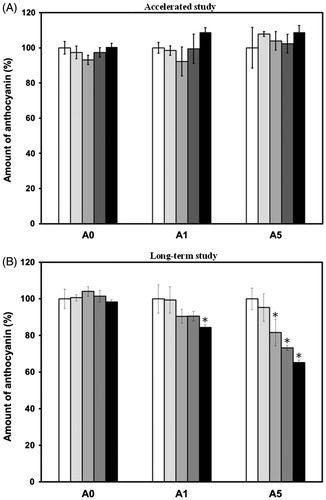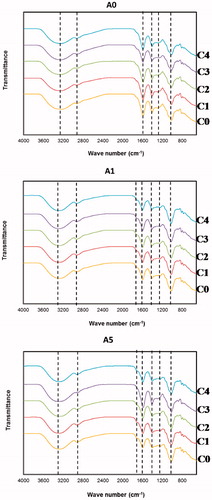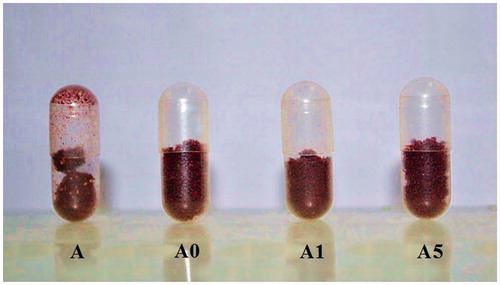Figures & data
Table 1. Characteristics of mulberry extracts obtained from Chul Thai Silk Co., Ltd. (Petchaboon Province, Thailand).
Figure 1. (A) Model of alginate/chitosan beads prepared by different processes without and with anthocyanin encapsulation. (B) Chemical structure of an anthocyanin, R1 and R2 are functional groups, and R3 is a sugar molecule.
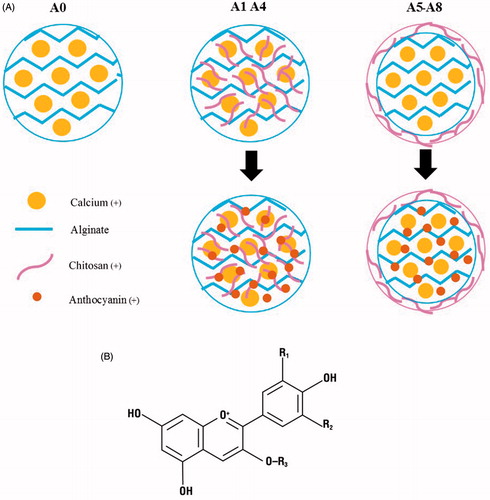
Table 2. Formulation and nomenclature of alginate/chitosan beads prepared by different processes.
Figure 2. Microscopic images of different formulations of alginate/chitosan beads prepared by different processes before (upper row) and after encapsulation with mulberry-extracted anthocyanin (lower row) (scale bar = 500 μm).
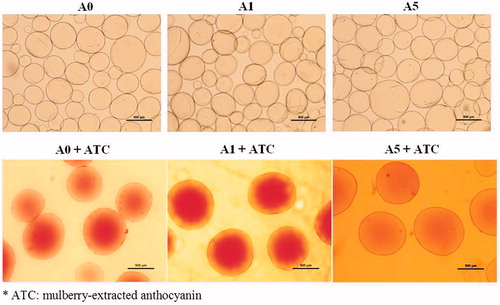
Figure 3. Amount of anthocyanin in alginate/chitosan beads encapsulating mulberry-extracted anthocyanin (*significant difference at p < .05 when compared to A0, †significant difference at p < .05 when compared to A1 within the same preparation group, A1–A4).

Figure 4. Dynamic water swelling ability of alginate/chitosan beads (A0, A1, and A5) when incubated at different pH (♦ pH 1, ▪ pH 4, ◆ pH 6, • pH 7.4).
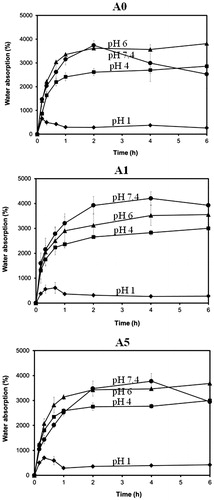
Figure 5. Microscopic images of alginate/chitosan beads (A0, A1, and A5) when incubated at different pH (1.0, 4.0, 6.0, and 7.4) for 6 h (scale bar = 500 μm).
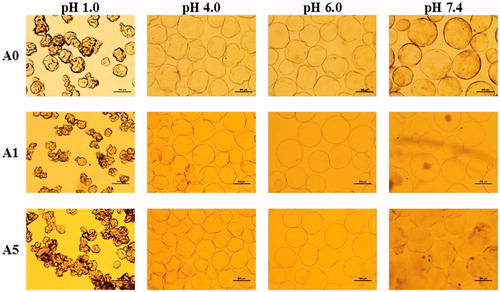
Figure 6. Percentage of weight remaining of alginate/chitosan beads (A0, A1, and A5) when incubated in (A) simulated gastric fluid (SGF) condition (pH 1.2) and (B) simulated intestinal fluid (SIF) condition (pH 6.8) at 37 °C (♦ A0, ◆ A1, ▪ A5).
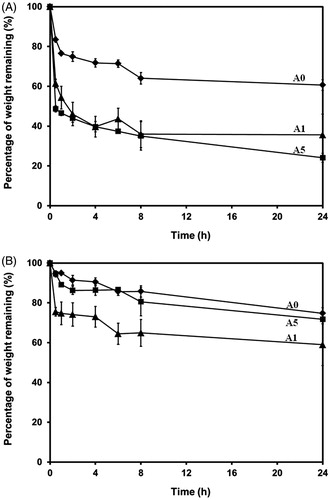
Figure 7. Cumulative release of anthocyanin from alginate/chitosan beads (A0, A1, and A5) encapsulating mulberry-extracted anthocyanin when incubated in (A) simulated gastric fluid (SGF) condition (pH 1.2) and (B) simulated intestinal fluid (SIF) condition (pH 6.8) at 37 °C (♦ A0, ◆ A1, ▪ A5).
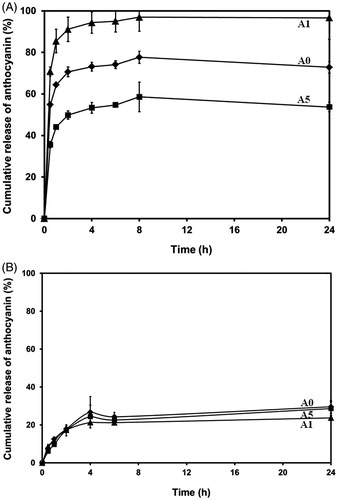
Figure 8. Stability of anthocyanin in alginate/chitosan beads (A0, A1, and A5) encapsulating mulberry-extracted anthocyanin after (A) freeze–thaw for 0 ![]()
